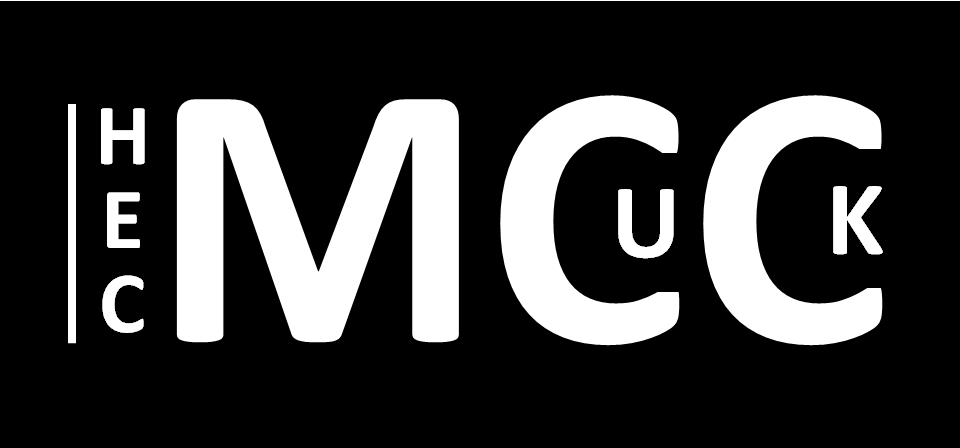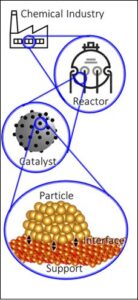From all the manufactured goods generated and consumed in the UK, about 90% are directly or indirectly involved in a catalytic process making these products accessible to the large public and minimising the industrial environmental impact. Computer simulations of such catalysts and processes are suitable tools to comprehend their characteristics and functionalities allowing scientist to design more active, durable, and cost-effective catalysts. Accordingly, we are developing an innovative method to characterise and predict the catalysts’ active sites while considering the dynamic aspects of their morphology and thermal and chemical resilience. Contrary to projects with similar goals utilising huge computational resources, we are identifying key trends and features from representative simulations, which are transferable to catalysts of different nature, allowing us to achieve accurate predictions at a minimum computational cost. We foresee a considerable impact on the field of catalysis, and, in the longer term, it will drive step changes in capabilities, efficiencies and sustainability, consequently transforming the competitiveness of the chemical manufacturing industries within the UK.
The chemical sector in the UK is one of the longest established in the world, with £55.5 billion of revenues and £19.2 billion value-added in 2018. Chemicals and pharmaceuticals are the UK’s second-largest manufacturing industry, the UK’s top manufacturing export earner with an annual trade surplus of nearly £5 billion on sales and the responsible for around 500,000 direct and indirect jobs.1 Products of the chemical industry are the basis for almost every manufacturing activity, with up to 90% of them relying on the activity and stability of catalysts. The intelligent design of resilient catalysts will enhance the chemical industry alignment with a sustainable economy and the `Principles of Green Chemistry`. Advances in the understanding of catalysts, commonly as supported crystallites in the nano-scale region, rest on our knowledge of their size-dependent structure, durability, and reactivity. Nevertheless, the fundamental knowledge of designing robust nanostructures remains a grand challenge hindered by the difficulties of predicting the morphology and stability of such particles.2 Factors like the nature of the particle, the support and the selective adsorption of molecules to different crystal facets are all capable of influencing their structure.3,4 The catalytic performance (reaction rates and selectivity) depend upon the chemical potential, particle size and the nature of the material upon which they are supported.5 Understanding how is crucial to developing new catalyts. For a catalyst to be cost-effective, it also needs to be durable, which, in the case of supported catalysts, strongly depends on the adhesion between the crystallite and the support to avoid the combination of particles – sintering. The chemical potential and adhesion terms are associated through the classical Gibbs‒Thomson relation and are dependent on the size of the supported particle.6 However, engineer nanostructures at the atomic level in the laboratory persist an extremely complicated task due to the lack of synthetic and characterisation protocols. The presence of active catalytic sites, i.e. with high chemical potential, and the area in direct contact with the support are determined by the structural morphology of the supported particle. For large nanoparticles (>5 nm), the equilibrium morphology can be calculated by extending the Wulff–Kaischew theorem,4 which adhesion may be estimated from the supported particles’ dimensions using the Winterbottom approach.7,8 However, the most active catalysts are typically mucher smaller, making it challenging to perform detailed, systematic investigations.
Computer simulations provide the tools to predict activity and durability of such nanostructures, accelerating the understanding and development of bespoke catalysts.9,10 It is typically assumed that the most stable morphology contains the catalysts active sites. However, the most stable morphology generally cannot be guessed because chemical bonding in clusters is generally not well understood. Hence, the structures need to be found using stochastic global optimisation and smart sampling techniques, many of which have been developed for this purpose.11-14 Simulations for surface-deposited clusters too expensive to perform all the possible atomic arrangements. Instead, we are investigating the relationship between easily measurable geometric parameters and stability patterns leading to accurate morphologies with detailed information of their durability (adhesion to the support) and reactivity (chemical potential) in a cost-effective manner. From our initial results we knew we needed an effective method to generate stable structures below several nanometres, where classical approximations are not valid, and the large number of atomic arrangements makes it unviable to previous stochastic frameworks. We developed a model to quantify the strains between a particle and its support, which controls the particle wettability over the surface.15 We were also able to identify the dependence of particles’ morphology on supports participating in catalytic reactions, e.g. reducible oxides.16 Currently, we are unravelling the relationship between the particle’s properties and its chemistry, and rationalising the particle-support adhesion and chemical activity based on few simple quantum mechanics simulations and classical thermodynamics. Such fundamental understanding will permit the adaptation and validation of algorithms ensuring the transferability of our investigations to other materials.
There is a strong academic interest in determining the morphology of supported nanomaterials, which even small modifications can generally affect their properties. Recently, the characterisation of interfacial properties, e.g. of metal-oxide systems, has also been of considerable academic and industrial interest due to the widespread applications in the development of new technologies. Indeed, the transformative outcomes of this project will provide efficient tools to evaluate the structural integrity of supported nanoparticles. The morphological information will guide experimentalists to increase the number of active sites and stabilise them leading to more active and durable catalysts. Hence, acceleration of innovation in catalysis drive step changes in capabilities, efficiencies, and sustainability, consequently transforming the competitiveness of the chemical manufacturing industries, increasing their productivity, and reducing waste.
Outcomes:
- New knowledge: a new numerical method for predicting catalysts activity and stability
- New technology: such method will guide experimentalists to synthetise efficient catalysts for the sustainable production of energy and bulk chemicals
- New cross-disciplinary collaborations with academics and industrialists
References:
[1] CIA. Britain at Work. Chemicals – the Industry of Industries 2019; [2] Ultramicroscopy 1989, 31, 73; [3] J. Mater. Sci. 2013, 48, 3605; [4] Prog. Surf. Sci. 2005, 80, 92; [5] Chem. Rev. 2020, 120, 3890; [6] ACS Nano 2017, 11, 1196; [7] Acta Mater. 2011, 59, 5320; [8] Nat. Mater. 2020; [9] National Materials Advisory Board. Integrated Computational Materials Engineering (National Academies Press) 2008; [10] Nat. Mater. 2016, 15, 365; [11] J. Phys. Condens. Matter 2019, 31, 113001; [12] Nanoscale 2015, 7, 14032; [13] 2004, 77, 101; [14] Int. J. Quantum Chem. 2013, 113, 2091; [15] Phys. Chem. Chem. Phys. 2019, 21, 19011; [16] J. Mater. Chem. A 2020.
Collaborators:
Alberto Villa, Milan University; Nikolaos Dimitratos, Bologna University; Youzhu Yuan, Xiamen University; Glenn Jones, Johnson Matthey Technology Centre.
Funding:
UK EPSRC grant EP/P005845/1 (£99,369)


